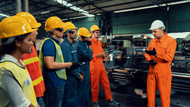Toolbox talks are a great way to start the day (or shift) on the right foot. They provide all the information needed before getting started, and they make sure everyone's aware of what health risks might come their way while working at the job site! Learn its definition, importance, and examples to implement in your safety measures.
What is a Toolbox Talk?
A toolbox talk, also called safety briefings, safety meetings, and tailgate meetings is a short safety meeting conducted on the job site. They provide a way for workers to communicate with each other about any safety concerns and can help identify potential hazards before they occur. These meetings involve workers and supervisors discussing a safety topic, which is either chosen by the employer or suggested by workers.
Who Conducts Toolbox Talks?
One of the most important aspects of running a safe and efficient work site is ensuring that all employees are adequately trained in safety. One way to do this is through regular toolbox talks. These sessions help ensure that everyone is up-to-date on best practices and procedures and that any new hazards are quickly addressed. But who should be responsible for conducting these talks?
The supervisor or a safety representative usually conducts toolbox talks. At many companies, the responsibility falls onto the Safety Officer or Environmental Health and Safety (EHS) Manager instead. Others form health and safety committees (HSCs) or elect health and safety representatives (HSRs) to advise and express safety concerns to management.
Safety officers, committees, and representatives typically have more experience with safety procedures and are better equipped to handle any questions that may arise during the talk. They often better understand the company's safety policy and can ensure that all employees follow the proper procedures. By conducting the discussions themselves, Safety Officers and EHS Managers can help create a stronger sense of accountability among employees and reduce the likelihood of accidents.
However, anyone can conduct a toolbox talk as long as they are knowledgeable about the topic and can keep the meeting focused.
Purpose of Toolbox Talks
Toolbox talks are a key part of building a solid safety culture. They provide an opportunity for employees to receive essential safety information and to ask questions about the work they will be undertaking. Toolbox talks also help to reinforce the company's commitment to protecting its workers.
By holding regular meetings, employees are reminded of the importance of safety and are less likely to take it for granted. In addition, toolbox talks help prevent complacency by focusing on high-risk scenarios and keeping workers up to date with changes to their working conditions. It covers any accidents or injuries that have occurred and how they could have been prevented to ensure that your team remains safe and healthy.
Simply put, the essential purposes of conducting safety meetings are:
- They provide a forum for workers to raise any health and safety concerns that they may have.
- They help ensure that everyone is updated on the latest safety procedures.
- They provide an opportunity for workers to share their own experiences and best practices.
- Finally, toolbox talks help to foster a culture of safety in the workplace by highlighting the importance of taking care of oneself and others.
What Industries should conduct Toolbox Talks?
Any industry or company that employs workers can benefit from holding regular safety meetings. However, there are some industries in which toolbox talks are crucial. These include:
Construction industry – construction sites are inherently dangerous places. Workers can be exposed to various hazards, including falling objects, electrical shocks, slips, trips, and falls. By holding regular safety meetings, construction companies can ensure that their workers know the risks involved and how to stay safe.
Manufacturing industry – hazards and risks in manufacturing can be severe. Not only is there a risk of getting injured from dangerous machinery or equipment, but also strain due to repetitive tasks on production lines will take its toll over time if not mitigated with proper care measures. Workers can also be exposed to hazardous substances that harm one's health.
Mining industry – the miner's health has always been a topic of great importance to the mining industry. The long hours, high temperatures and dangerous conditions they work in can lead to Silicosis or Black Lung disease and occupational hearing loss.
Transportation industry – the transportation industry covers a wide range of businesses, from airlines and railways to trucking and maritime. There are many hazards in the transportation industry. Vehicles collide, trains derail, boats capsize, and aeroplanes crash. Each of these accidents can cause severe injury or death. In addition, they can also cause damage to property and the environment. As a result, companies in the transportation industry need to take steps to reduce the risk of these hazards.
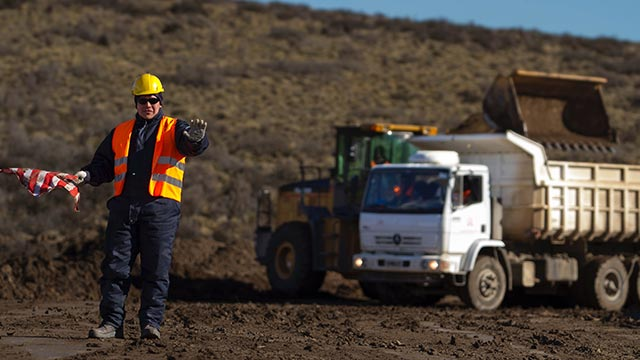
Does Safe Work Australia require Safety Toolbox Talks?
There is no legal requirement in Australia for companies to hold safety meetings. However, WorkSafe Victoria strongly recommends that all businesses with workers conduct regular health and safety committee (HSC) meetings. It is also a good idea to check with your state's occupational health and safety regulator to see if there are any specific requirements for your industry.
Toolbox talks can discuss various topics, including how to operate equipment safely, avoid hazards, and what to do in an emergency. Moreover, these talks can be held regularly - whether daily, weekly, monthly, or even yearly.
What are Toolbox Talk Topics?
Toolbox talk topics can be wide-ranging, but they should always be focused on health and safety. They should cover one specific topic at a time to avoid being too repetitive or overwhelming for workers who may have different duties throughout each day at work. Here are 15 examples of topics that could be covered in a toolbox talk:
#1 First Aid
First aid is an essential skill that everyone should know. Despite this, a 2017 Australian Red Cross study found that only five percent of Australians have been first aid trained, which is one of the lowest rates in the world. This is a concerning statistic, as first aid can be used to save lives. Minutes matter in a medical emergency. Including a toolbox talk on first aid can help ensure that your workers have the skills they need to respond in a medical emergency.
Check out safety documents related to first aid:
#2 Hazardous Chemicals
Hazardous chemicals can pose a health or safety risk to workers if they are not used properly. Examples of dangerous chemicals include bleach, paint thinners, and welding fumes. Workers exposed to these substances can suffer from various health effects, ranging from skin irritation to bronchitis. In some cases, exposure to hazardous chemicals can even lead to death.
That is why it's so crucial for employers to provide proper training on the safe use of these substances. Toolbox talks are one way to ensure that workers are aware of the potential hazards posed by hazardous chemicals and know how to protect themselves.
Check out safety documents related to working with hazardous chemicals:
#3 Manual Handling and Ergonomics
Manual handling is the process of lifting, carrying or moving objects by hand, and it can be a significant source of workplace injuries. On the other hand, Ergonomics is the study of how people interact with their environment and how to optimise work conditions to minimise stress and strain on the body.
By discussing these topics in a toolbox talk, workers will be better informed about how to lift and carry objects safely and how to work to minimise the risk of injury.
Check out safety documents related to manual handling:
#4 Personal Protective Equipment (PPE)
Personal Protective Equipment, or PPE, is a topic that should be included in any workplace safety program. PPE is any clothing or devices worn by workers to protect themselves from workplace hazards. Common examples of PPE include hard hats, safety glasses, gloves, and hearing protection.
When discussing PPE, employers should ensure that workers are adequately trained in its use and care and always follow the manufacturer's instructions. By taking these precautions, workers can help ensure their safety and the safety of those around them.
Check out safety documents related to PPE:
#5 Working at Heights
Falls from height continue to be a leading cause of worker fatalities in Australia. According to Safe Work Australia's data, over eight years, 232 workers were killed due to a fall from height - 11% of all worker fatalities over that period. In 2010-11, 29 workers died from falls, or 0.25 per 100,000.
A toolbox talk about working at heights can be used to discuss potential hazards and how to avoid them. When discussing working at heights, employers should cover topics such as fall prevention, the use of personal protective equipment, and the correct way to set up and use ladders, scaffolding, and other height-related equipment.
Check out safety documents related to working at heights:
#6 Working in Hot Conditions
Since hot conditions can pose several risks to workers, adequate precautions must be taken. Some risks associated with working in hot conditions include heat stroke, heat exhaustion, and dehydration. To help prevent these risks, employers should provide workers with information on the importance of staying hydrated, taking breaks in cool areas, and wearing appropriate clothing.
In addition, employers should have a heat-related illness prevention plan in place, and workers should be trained to recognise the symptoms of heat-related illness and what to do if someone becomes ill. They can escalate the information by conducting toolbox talks.
Check out safety documents related to working in hot conditions:
#7 Incident or Accident Reporting
Incident reporting is an essential part of any safety program. It provides a way to document and track incidents, identify trends, and develop corrective actions. Every employee should know how to report an incident, and all reports should be reviewed regularly. It can be done by making it a toolbox talk topic.
When discussing incident reporting, employers should cover topics such as the types of incidents that should be reported, how to write an incident, and who to report it to. In addition, employers and workers can have the opportunity to look for patterns or trends that may indicate a need for additional training or changes in procedures.
Check out safety documents related to incident reporting:
#8 Electrical hazards
Electricity is a common workplace hazard. They include exposure to live electrical wires, energised equipment, and shocks. Employees should be trained on the proper procedures for working around electrical hazards and always follow safety guidelines. Toolbox talks are an effective way to educate employees about electrical hazards and other workplace safety topics.
When discussing electrical hazards, employers should cover topics such as the dangers of electricity, how to identify electrical hazards, and what to do if you come into contact with an electrical hazard. In addition, employers can provide tips on how to stay safe around electricity.
Check out safety documents related to working in electrical hazards:
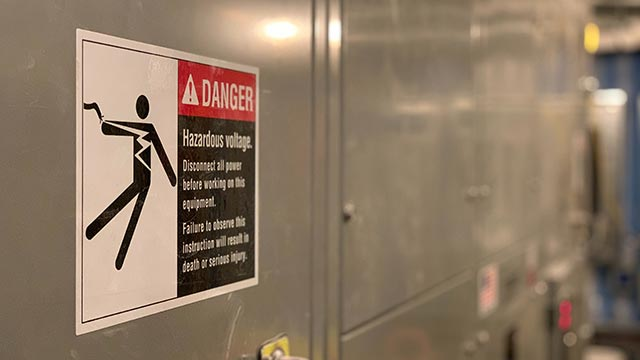
#9 Hand tool inspections
Hand tools are a common type of equipment used in many workplaces. While they are generally safe to use, there is always the potential for hazards. To help prevent accidents, all hand tools must be inspected regularly.
Inspections should be conducted before each use, and any damaged or defective tools should be taken out of service immediately. Toolbox talk on hand tool inspections is an effective way to ensure that all employees know the importance of tool inspection and how to inspect their tools properly.
When discussing hand tool inspections, employers should cover topics such as the types of hazards that hand tools can cause, how to properly inspect hand tools, and what to do if a device is damaged or defective.
Check out safety documents related to hand tool inspections:
#10 Fire Safety
It's essential to have regular toolbox talks on fire safety to refresh people's understanding of fire hazards and how to control them. This can include proper waste management, safe procedures when using spark-creating items, and evacuating in the event of a fire.
It's also important to remind people of the assembly place in the event of a fire. Having these regular safety talks can help ensure that everyone is aware of the dangers of fire and knows what to do in the event of a fire.
Check out safety documents related to fire safety:
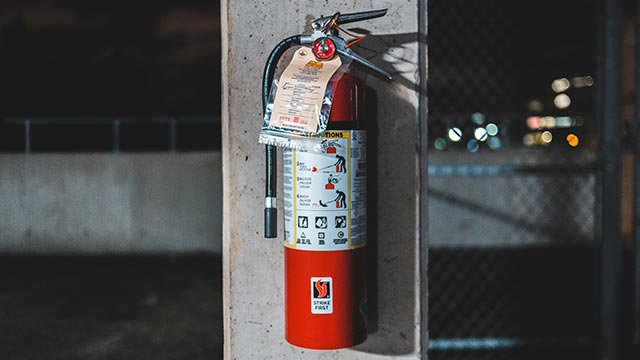
#11 Asbestos Awareness
Asbestos is a material that was once widely used in construction and other industries. It's now known to harm human health, and asbestos exposure can cause serious illnesses. Employees who work in industries where asbestos may be present should be trained on the risks of exposure and the proper procedures for working with asbestos. Toolbox talks are an effective way to educate employees about asbestos and other workplace safety topics.
If people need to work around asbestos-containing materials, it's essential to refresh their knowledge of the risks involved and how to avoid exposure. A toolbox talk on asbestos awareness could cover the following topics: where any available asbestos-containing materials are on site, the risks of disturbing them, and how to avoid doing so.
Check out safety documents related to asbestos awareness:
- Asbestos Awareness Safe Work Method Statement
- Asbestos Safe Handling < 10 sqm. Safe Work Method Statement
#12 Working in Confined Space
There are a variety of confined spaces, such as storage tanks, process vessels, bins, silos, vats, hoppers, pits, utility holes, tunnels, equipment housings, ductwork, pipelines, and sewers. Many of these spaces are not intended for people to enter, and the conditions inside can be dangerous. But some work calls for this task.
When working in a confined space, many hazards can pose a danger to you. For example, oxygen deficiency and deadly gases like carbon monoxide may exist. Only trained professionals should enter their workplace. Working in a confined space can be very hazardous, and it's vital to be aware of the dangers before entering. A toolbox talk on confined spaces can help employees to understand the risks involved and how to stay safe when working in these.
Check out safety documents related to working in confined spaces:
#13 Excavation
Excavation work is one of the most dangerous activities on construction sites. To ensure the safety of workers, all companies involved in excavation work must provide employees with comprehensive training on the risks involved and the safety measures that must be taken.
Toolbox talks are an excellent way to deliver this information, as they allow employees to ask questions and raise any concerns they may have. When conducting a toolbox talk on excavation safety, employers should cover the following topics:
- The dangers of trench collapse and how to prevent it.
- The need for protective equipment when working in an excavation.
- The importance of regular inspections of excavations.
- Hazardous materials handling and disposal.
By covering these topics during a toolbox talk, employers can help ensure that workers are aware of the risks involved in excavation work and understand the importance of following safety procedures.
Check out safety documents related to excavations:
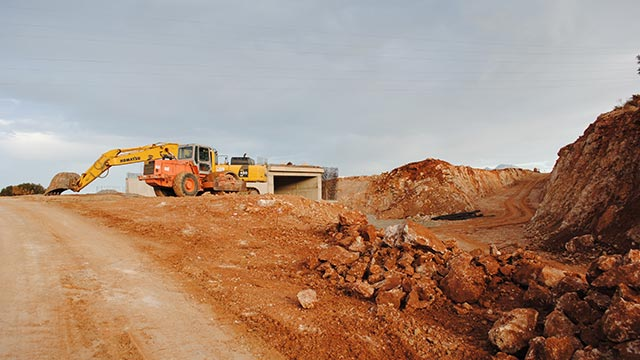
#14 Environmental Awareness
Construction sites can significantly impact the environment, both during and after the work is carried out. It's essential to be aware of these impacts and take steps to minimise them where possible. For example, construction activity can generate a lot of waste, which can be harmful to local wildlife if it's not disposed of properly. Noise and air pollution are common problems associated with construction sites, which can cause distress to nearby residents.
A toolbox talk on environmental awareness can help employees understand the impacts of construction work on the environment and how to minimise these impacts.
Check out safety documents related to environmental awareness:
#15 Forklift
While forklifts are essential to many businesses, they can be dangerous if not used properly. That's why discussing basic forklift safety practices with your team is necessary.
First and foremost, always be aware of forklifts' blind spots. Ensure that employees operating forklifts know where these blind spots are and that other employees are aware of them as well. Another essential safety practice is always alert and conscious when around forklifts. Whether operating a forklift or not, it's necessary to be aware of the potential hazards. Following these basic safety practices can help prevent workplace accidents involving forklifts.
Check out safety documents related to forklifts:
- Forklift - Electric Safe Operating Procedure
- Forklift - Pedestrian Operated Safe Work Method Statement
Toolbox Talk Template for Your Next Safety Meeting
Preparing for your next safety meeting can be time-consuming. To help you save time, SafetyDocs by SafetyCulture can provide you with a toolbox talk template that you can use for your next safety meeting. This template includes toolbox talk topics that you can select from and sections for recording the following:
- List of attendees
- Agenda
- Comments and discussions
- Actions that need to be done
By using a toolbox talk template, you can ensure that your toolbox safety meetings are well-organised and productive. SafetyDocs is Australia's most trusted provider of workplace health and safety documentation. We offer the following benefits:
- Instant delivery via Email
- Use with Microsoft Office Mobile App
- Customisable and fully editable templates
- Pay only once—no subscription is required
- Compliant with Australian and New Zealand's legislation
Browse our library of documents and use them as part of your safety discussions today and get started on developing a safer workplace for everyone. To learn more about developing a comprehensive safety program for your workplace, connect with SafetyDocs today!
Available for instant download and supplied in fully editable MS Word format for use in your business.
Please note that the above information is provided as a comment only and should not be relied on as professional, legal or financial advice.
Share This Article
